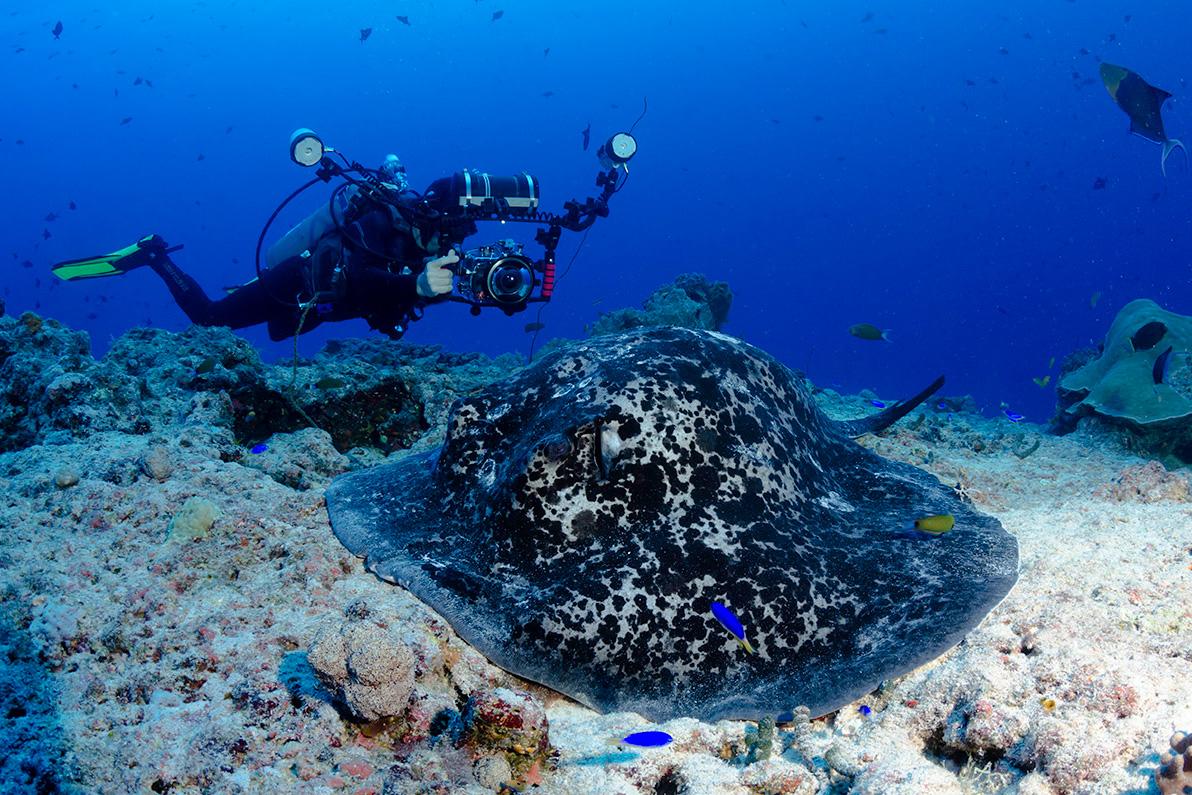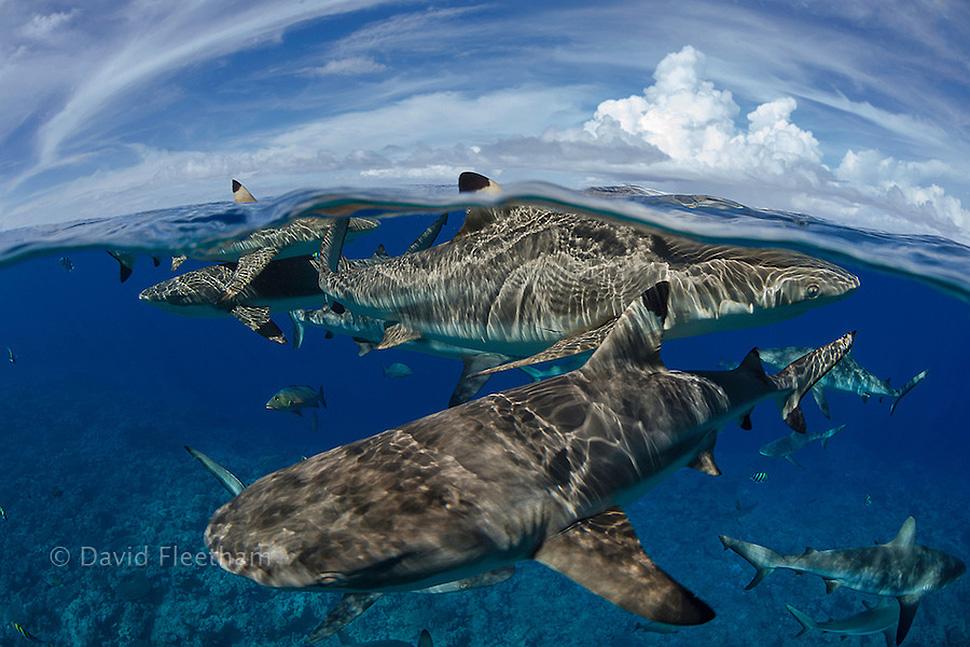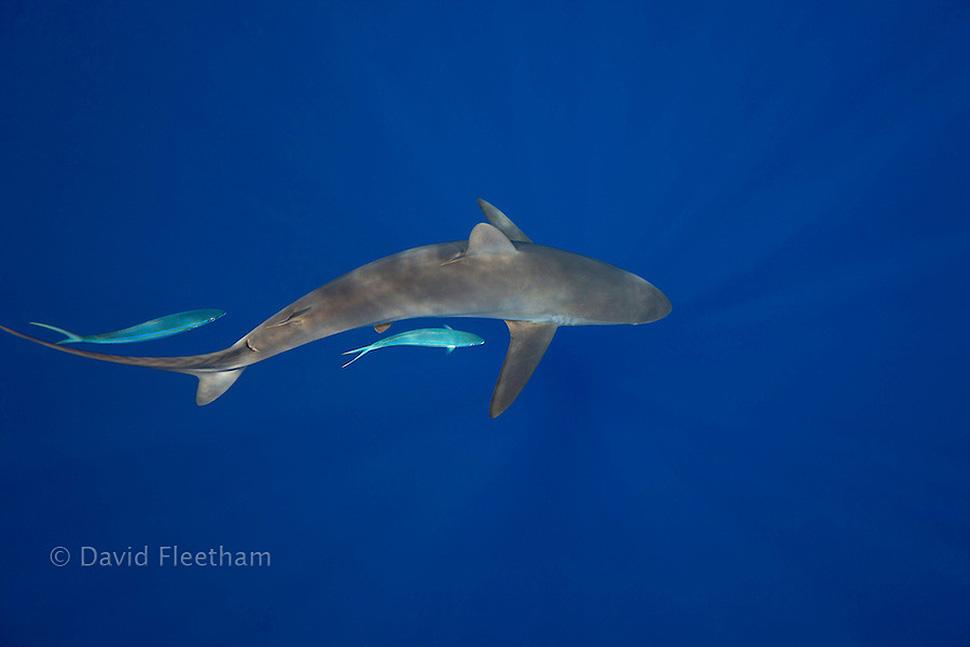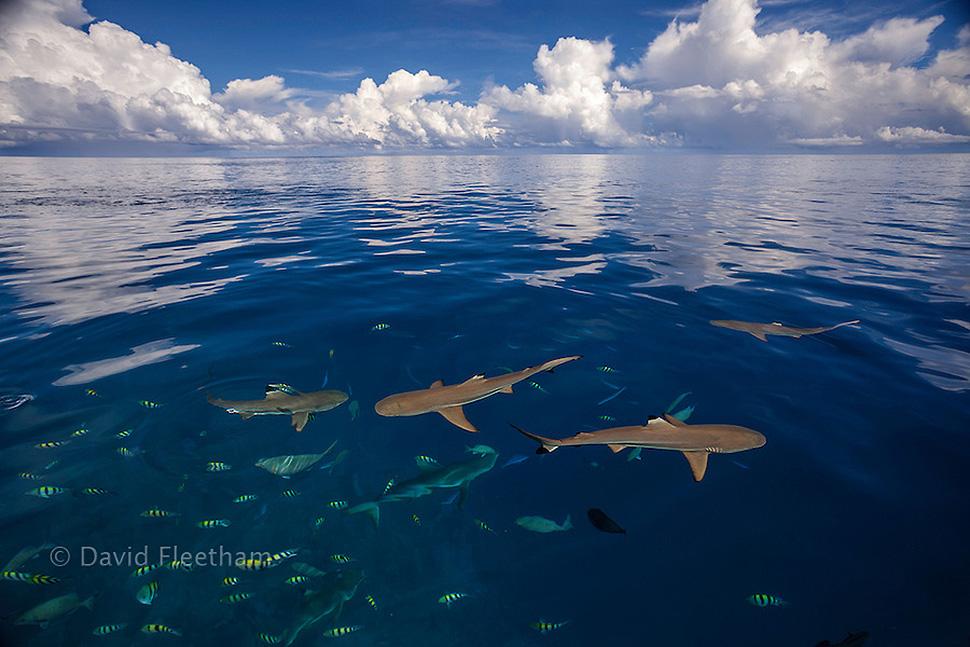Sharks have roamed the Earth’s seas for nearly 400 million years, and are one of the oldest species. Their size, power, and teeth fill us with fear and fascination, which explains the celebration of (and obsession with) the species in movies like Jaws, in all-week TV binging on the Discovery Channel’s Shark Week, in absurd low-budget sci-fi flicks like Sharknado.
While often portrayed as underwater killers, statistically, only a few people die each year from shark attacks. Many sharks aren’t actually dangerous; some are even facing extinction at the hands of humans. Yet most of us are terrified to swim near one.
Which is why shark photography can be a challenging subject, but for underwater photographers who aren’t afraid to get close, the reward of capturing a moment with one of the world’s most formidable ocean creatures can be well worth the danger involved. And photographing sharks isn’t just for pros anymore; amateurs can also capture them in supervised dive expeditions held all around the world.
“If you want a shark to come closer, do not look at it.”
If you’re ready to jump into open water to try your hand at shark photography, look to the expert for some tips: David Fleetham, one of the most recognized and award-winning shark photographers in the world. Fleetham, who has been shooting sharks all over the world since 1976, has been photographing them for the likes of Life Magazine, National Geographic, the Smithsonian Museum, and the Cousteau Society. He spoke with us about his three decades of experience with sharks.
How did you end up photographing sharks?
Thirty years ago, good images of sharks were few and far between. Indeed, sharks were extremely difficult to get close to, which is strange, since there were so many more of them around back in those days. Populations now have dwindled down so far that some species are being listed as extinct in certain oceans. When shark images were uncommon, they sold well. It’s the law of supply and demand: Nowadays there are many places around the world where you can have up-close and personal encounters with most of the larger shark species.

Do you use cages for specific species?
Just for great white sharks. There are now people encountering great whites outside of the cage, but I will continue shooting from behind the bars, with at least 50 percent of me in the cage. One of the early expeditions I did in southeast Australia was run by Ian Gordon, a local biologist studying this species. I told him that if I was comfortable with a particular shark I was photographing, I might get out of the cage. Ian replied, “Mate, it’s not the shark that you can see that you have to worry about.” Over the years I have seen the truth in that statement.
Have you had some close shaves or ever been bitten?
“The best place to photograph great whites is off northern Mexico.”
I later recounted this story to Jack Randall, the world’s foremost ichthyologist, and a friend working out of the Bishop Museum in Honolulu at that time. He believed I was one of just a handful of photographers to ever capture a sandbar shark on film and the first record (of an attack) he knew of. One of the images of a sandbar shark was selected for the cover of Life Magazine to illustrate a story on the killing of sharks. To this day, it is still the only underwater image to ever appear on the cover.

Where are some of the best (and not so great) places you have traveled to shoot great white sharks?
I did several trips to Australia in the 80s and early 90s — the best place to shoot underwater images at that time — although still very hit-or-miss back in those days. I have been to South Africa with limited results because of weather. According to the fishermen at the Cape of Good Hope, we selected the worst winter in 25 years. We had 12 boat days booked, but only got out twice. Both times the charter boat captains did not want to go, although both days we saw sharks.
The best place on the planet to photograph great whites is now Guadalupe Island, off northern Mexico. This spot has the best visibility, combined with the most consistent sighting of animals and multiple vessels to select from.
What gear do you use?
- 1. (Image © David Fleetham 2014)
- 2. (Image © David Fleetham 2014)
- 3. (Image © David Fleetham 2014)
- 4. (Image © David Fleetham 2014)
I am currently shooting a Canon 5D Mark III in an Ikelite housing with twin Ikelite substrobe 161s. Ikelite was the first company to tackle the through-the-lens (TTL) strobe technology after we all went digital. An amazing number of photographers are still shooting with their strobes on manual, which for many subjects works great, but not for sharks. Sharks tend to be somewhat shy, until they are not. If you have your strobes set to shoot an individual 5 or 6 feet away and it turns, and puts its nose on your [flash] dome, manual strobes will overexpose the shot. With Ikelite’s TTL I can start shooting with an animal 10 feet away…and every shot will be perfectly exposed. It is amazing how well it works.
With sharks being skittish, we would assume the lens you choose and strobes have to be set to low power?
Skittish sharks are not what I try to shoot. There are many shark-feeding dives available around the world and this is where to get good shark images. Sharks that have not been around divers have no interest in coming in close.

Animals that have been accustomed to being rewarded for putting up with divers and cameras are what to shoot. There are a few sites where sharks have become used to seeing divers…without bait, but they are few and far between.
There is a split in the diving community as to the ethical implications of feeding sharks and how this is really altering their behavior. My two-cents worth, is that the number of sharks involved in the feeding/human encounter is infinitesimal in comparison to the numbers that end up in a ludicrous age-old soup.
As far as lenses go, I tend to fall back on a wide-angle zoom lens for sharks and dolphin. It allows you to shoot animals that will not come close, but makes it possible to get really wide when it does happen. The downside of zoom lenses is soft corners, and to avoid this I try to never shoot any more open than f/11. The beauty of shark images is that most corners are often blue water. Luckily soft blue water looks as good as sharp blue water. I have had also jumped in with fixed 24, 28, and 35mm lenses and just waited for the right encounter. I have even produced “keepers” with 50mm and 100mm macro lenses, so I urge everyone to eventually try whatever you’ve got.
Any other pointers before jumping in?

For the most part, sharks are shy. They are incredibly aware of eye contact. If you want a shark to come closer, do not look at it. I will glance over the top of my housing and then hide my mask behind it to avoid this. Bubbles will also make most sharks turn away. Once I fix my position to shoot from, I will breathe normally until I see a shark approaching. At that point I’ll take a couple of quick, big breathes and then not exhale for the last 10-15 feet of its approach. This is much more likely to lead to a close encounter. The other way to go is a rebreather where you have no bubbles what so ever.
David Fleetham is one of the most published underwater photographers in the world. He began diving and photographing underwater in 1976 and has been in Hawaii since 1986. In 2010, his image of a manatee was selected from 50,000 entries as the grand prize winner in the professional division of the National Wildlife Federation’s photography contest. He is also a founding member of The Ocean Artists Society, whose members include James Cameron, Wyland, David Doubilet, and Al Giddings.






